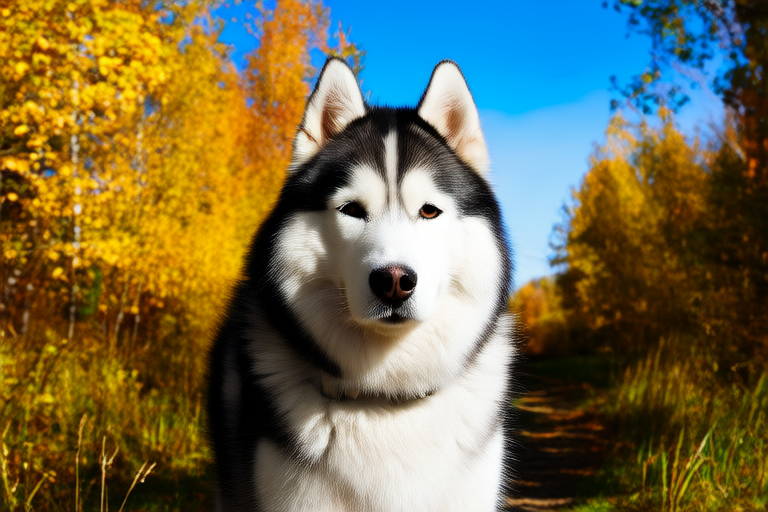
Siberian Huskies: The Ultimate Guide for New and Prospective Owners
Introduction to Siberian Huskies
The Siberian Husky is a breed of medium-sized working dog that originated in Northeast Asia. These dogs were bred by the Chukchi people of Siberia, who used them as sled dogs for transportation across vast distances in harsh Arctic conditions. Known for their endurance and resilience, Siberian Huskies have been instrumental in various expeditions and races, most notably the serum run to Nome in 1925, which helped to save lives during a diphtheria outbreak.
Physical Characteristics and Typical Health Issues
Siberian Huskies are known for their striking appearance, featuring dense double coats, erect triangular ears, and expressive almond-shaped eyes that can be blue, brown, or a combination of both. Their physical build is sturdy yet agile, with strong muscles and a well-balanced frame. Typically, they weigh between 35 to 60 pounds and stand at 20 to 24 inches tall.
Common health issues in Siberian Huskies include hip dysplasia, progressive retinal atrophy (PRA), and cataracts. Regular veterinary check-ups and genetic testing can help manage these risks. Additionally, their thick coat requires careful attention to prevent overheating in warm climates.
Personality Traits and Training Tips
Siberian Huskies are known for their friendly, outgoing personalities. They are typically gentle, affectionate, and good with children. However, due to their independent nature, they can be challenging to train. Consistency and positive reinforcement are key. Early socialization is crucial to ensure they grow up to be well-adjusted and well-behaved pets.
Training should focus on building trust and respect while maintaining a playful environment. Basic commands like sit, stay, come, and heel are essential. Given their intelligence, they thrive on mental stimulation and problem-solving activities.
Exercise and Dietary Requirements
Siberian Huskies are highly energetic dogs that require substantial daily exercise to maintain their physical and mental health. At least one to two hours of vigorous activity per day is recommended, including running, hiking, and playing. Without adequate exercise, they may become bored and destructive.
Dietary needs depend on the dog’s age, weight, and activity level. A balanced diet rich in protein and fat, tailored for active breeds, is ideal. Consultation with a veterinarian is advisable to determine the right food and portion sizes. Fresh water should always be available, especially in warmer weather.
Grooming Needs and Care Instructions
Due to their thick double coats, Siberian Huskies shed heavily, particularly twice a year during shedding seasons. Regular brushing—ideally daily during heavy shedding periods—is necessary to remove loose hair and prevent matting. Bathing should be limited to when absolutely necessary, as over-bathing can strip the natural oils from their skin.
In addition to grooming, regular dental care, nail trimming, and ear cleaning are important to maintain overall health. Professional grooming services may be beneficial for thorough coat maintenance.
Common Misconceptions About Siberian Huskies
One common misconception is that Siberian Huskies are easy to train. While they are intelligent, their independent streak makes them less responsive to traditional training methods compared to other breeds. Another myth is that they are suitable for apartment living. Their high energy levels and need for space make them better suited for homes with yards.
It’s also believed that all Siberian Huskies have blue eyes. In reality, they can have brown, blue, or heterochromatic eyes (one of each).
Advice on Living Environments Suitable for Them
Siberian Huskies thrive in environments where they have ample space to run and play. Rural areas or homes with large, securely fenced yards are ideal. They are not recommended for apartment living unless the owner can provide significant outdoor time.
These dogs are adaptable but prefer cooler climates. In hot weather, they need access to shade, plenty of water, and opportunities to cool off. Indoor living requires air conditioning or fans to keep them comfortable.
Tips for New Owners and Considerations Before Adopting
Before adopting a Siberian Husky, consider your lifestyle and whether you can meet their exercise and social needs. Are you prepared for the commitment of a dog that will live 12 to 15 years? Research local breeders and shelters to find a reputable source. Once adopted, establish routines for feeding, exercise, and grooming early on.
Joining a local husky club or online community can provide valuable support and resources. These groups offer advice, share experiences, and help foster a sense of community among owners.
Conclusion Summarizing Key Points for Responsible Ownership
Owning a Siberian Husky is a rewarding experience filled with companionship and adventure. Understanding their history, physical attributes, and unique personality traits is essential for responsible ownership. By providing proper care, exercise, and attention, you can ensure your Siberian Husky leads a healthy, happy life.
Remember, adopting a Siberian Husky is a long-term commitment. Be prepared to invest time and effort into their well-being. With the right approach, you’ll enjoy the loyalty, companionship, and joy that these magnificent dogs bring into your home.






